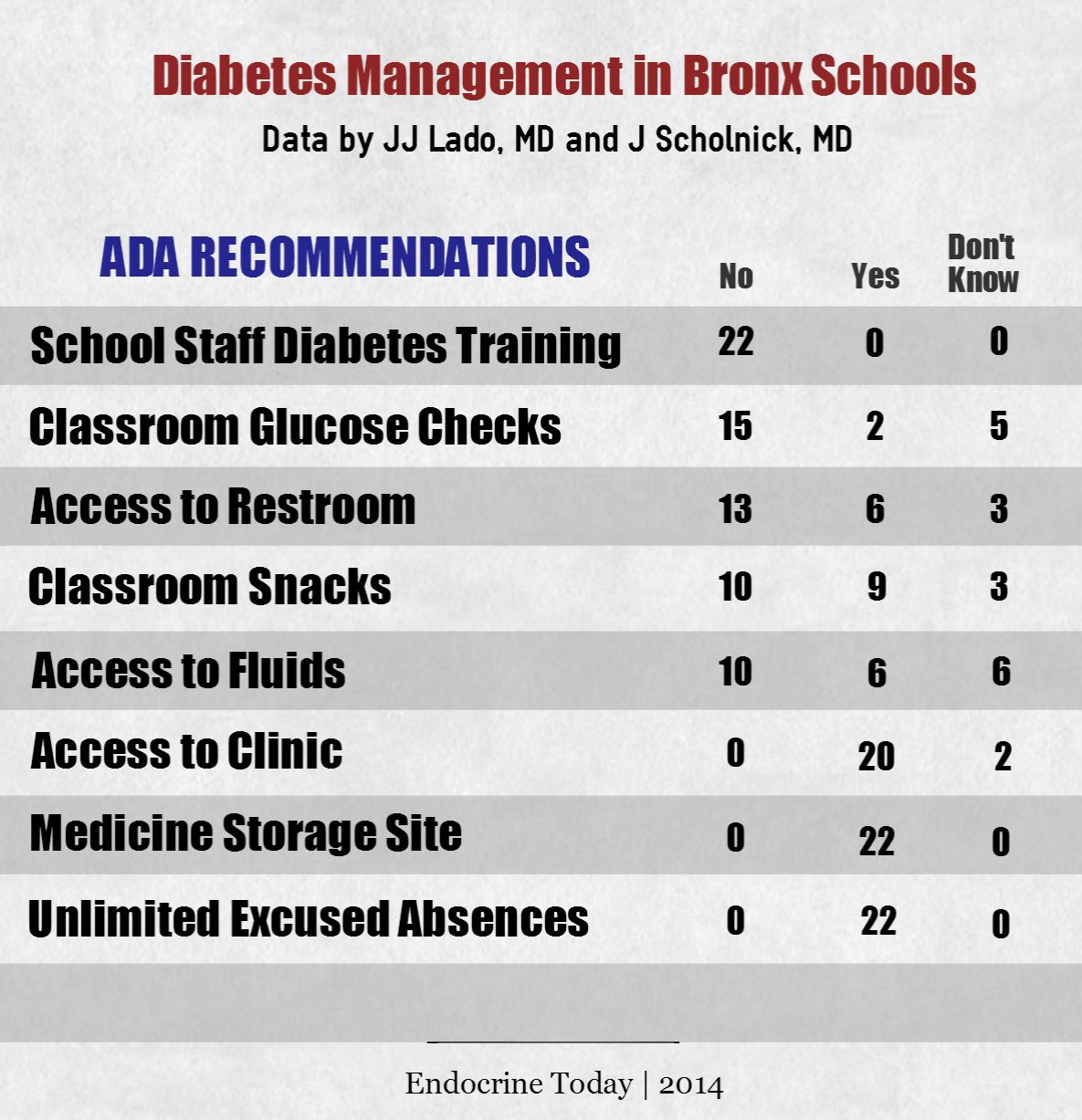Bronx schools lack accommodations, diabetes management tools
Most accommodations recommended by the American Diabetes Association are not followed in Bronx, N.Y., public schools, and certain barriers hinder proper management of the condition, according to research presented at the 2014 Pediatric Academic Societies and Asian Society for Pediatric Research joint meeting in Vancouver, British Columbia.
In a study of 19 Bronx, N.Y., school-based health clinics, Juan J. Lado, MD, and Jenna Scholnick, MD, both of the department of pediatrics at The Children’s Hospital at Montefiore, interviewed health personnel (n=22) working with an average of 3.2 elementary, middle or high school students with type 1 diabetes.

Juan J. Lado
“We do a lot of education for the parents, but if you think about it, children spend most days of the year in schools,” Lado told Endocrine Today. “This made me think: What are the schools doing to help manage diabetes in these children and improve their quality of life?”
After finding the ADA Position Statement on Diabetes Care in the School and Day Care Setting, which listed some recommended accommodations for optimal management in schools, Lado wanted to investigate what was actually being done.

Conversations covered school demographics, accommodations for students and management barriers in schools; the discussions were scribed by two individuals. Researchers tabulated categorical data and grouped qualitative data into themes.
None of the health personnel reported diabetes training provided for school staff, and only two reported availability of classroom glucose checks — both part of the ADA school recommendations.
Barriers cited most frequently were lack of diabetes knowledge among school staff, prioritization of class attendance, child or parental desire for privacy of medical information and staff uninformed of diabetes diagnosis.
Lado called it “somewhat surprising” that many teachers do not know which students have diabetes. “Most schools get a form listing medical conditions for the students, but these forms are not always disclosed to the teachers.”
Learning that some families do not fill out the forms truthfully due to concerns their child would be treated differently made Lado realize that “to fully address this issue we would need to target not just the schools, but also the families.”
Principals and school nurses could be the focus for future advocacy efforts to implement accommodations, Lado said. He suggested “reminder sessions” be done on a yearly basis, before the start of school, as well as teacher education, starting with those who have children with diabetes in their classroom. — by Allegra Tiver
For more information:
Lado JJ. #1516.207. Presented at: the Pediatric Academic Societies and Asian Society for Pediatric Research joint meeting; May 3-6, 2014; Vancouver, British Columbia.
Disclosure: Lado reports no relevant financial disclosures.
